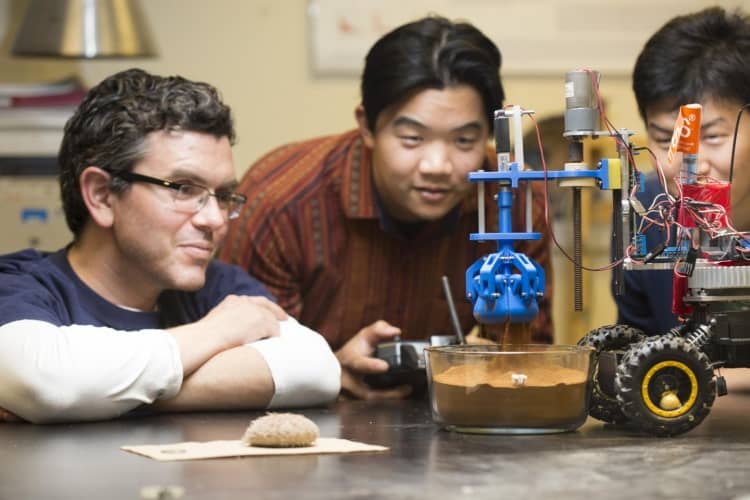
The study, described in the Journal of Visualised Experiments, is based on the mouth structure of pink sea urchins found off the west coast of North America. Powerful muscles and five curved teeth with triangle-shaped tips open outwards and close inwards in a smooth motion.
"Our goal was a bio-inspired device that's more precise and efficient at grabbing ground samples from different areas, and won't disturb the surrounding area like a shovel would," said lead author Michael Frank from the Jacobs School of Engineering at UC San Diego.
To mimic the action of the urchins, samples were collected from the ocean and the mouthpieces were analysed using microCT scans. The team was able to identify a key feature of the urchins’ biology that added strength. They found that a T-shaped structure known as the keel, which runs down the centre of the teeth, reduces stress on the teeth by 16 per cent when subjected to a 4.5kg load. The researchers also found that adding a keel increased the mass of a tooth by only 4 per cent.
Data from the microCT scans was converted into a file that allowed a team of undergraduate engineering students at the university to develop prototypes using 3D printing. After a number of iterations to refine the grabbing mechanism, the device was then attached to a small remote-controlled rover. Its ability to gather sand was first demonstrated, followed by another successful test on regolith that simulated Martian soil. The researchers hope the device could be of interest to NASA or SpaceX.





Glasgow trial explores AR cues for autonomous road safety
They've ploughed into a few vulnerable road users in the past. Making that less likely will make it spectacularly easy to stop the traffic for...